Dolores Pratchet
Dolores Pratchet was the post- Crisis on Infinite Earths Satan Girl, appearing in Supergirl (vol. 4) #40–41 (January–February 2000).
200 years ago in colonial America (1776), Dolores Pratchet, a practitioner of demonic rituals lost her daughter Rachel when the young girl tried to save her friend, a slave named Ember, from being burned at the stake for witchcraft. The two girls fused into one and became an Earth-Born Angel of Fire. However Ember began to fall from grace, dooming both her soul and Rachel's. Dolores made a deal with the demonic Carnivore and agreed to become his servant to save her daughter. He gave her magical powers and dubbed her Satan Girl. Satan Girl's magic was able to bridge time and pull the current Angel of Fire, Supergirl, from the present and switch her bodies with Ember, so that Supergirl would die on the stake, and Ember would exist in the future (along with Rachel). This disturbance of the timeline allowed Satan Girl to appear in the present with Ember. Supergirl was able to escape her death with the aid of Ember, who returned to her own time to live out her fate, and a sorceress known as Tammy Neil. By setting the timeline right, Satan Girl crumbled to dust as she was not alive in the correct timeline.
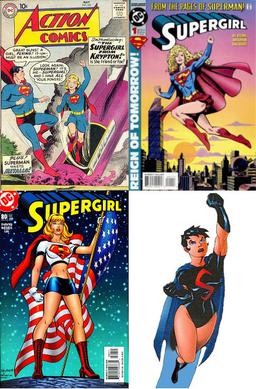
Supergirl is the name of several fictional superheroines appearing in American comic books published by DC Comics. The original, current, and most well known Supergirl is Kara Zor-El, the cousin of superhero Superman. The character made her first appearance in Action Comics #252 and was created by Otto Binder and Al Plastino.

Streaky the Supercat is a fictional superhero cat that appears in comic books published by DC Comics. He first appeared in Action Comics #261 and was created by Jerry Siegel and Jim Mooney.
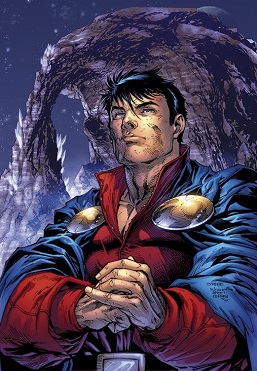
Lar Gand, known mainly as Mon-El, is a superhero appearing in American comic books published by DC Comics, commonly in association with the Legion of Super-Heroes, Superboy, and Superman. The character has been reinterpreted over the years, but in all versions serves as a hero with abilities similar to those of Superman, sometimes serving as a substitute for him.

Brainiac 5 is a superhero appearing in comics published by DC Comics. He is from the planet Colu and is a long-standing member of the Legion of Super-Heroes in the 30th and 31st centuries.

Ayla Ranzz, also known as Lightning Lass, Light Lass, and Spark, is a character appearing in media published by DC Comics. She is a member of the Legion of Super-Heroes in the 30th and 31st centuries, as well as the sister of Lightning Lad and Lightning Lord.
Invisible Kid is the name of two superheroes in the DC Comics universe, both of whom are members of the Legion of Super-Heroes in the 30th and 31st centuries.
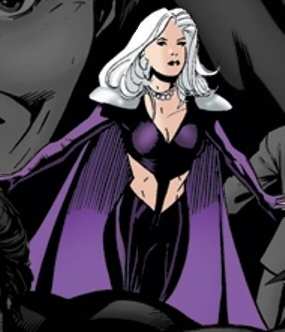
Princess Projectra is a fictional character, a superheroine in the DC Comics universe. Typically portrayed as a haughty member of an alien royal family, she is from the 30th and 31st centuries and is a member of the Legion of Super-Heroes.

Triplicate Girl is a superhero appearing in DC Comics, primarily as a member of the Legion of Super-Heroes in the 30th and 31st centuries. She has also had the aliases Duo Damsel, Triad, Una, Duplicate Damsel and Duplicate Girl.

The Fortress of Solitude is a fictional fortress appearing in American comic books published by DC Comics, commonly in association with Superman. It is the place where Superman first learned about his true identity, heritage, and purpose on Earth. The fortress functions as a place of solace/occasional headquarters for Superman and is typically depicted as being in frozen tundra, away from civilization. Its predecessor, Superman's "Secret Citadel", first appeared in Superman #17, where it was said to be built into a mountain on the outskirts of Metropolis. By issue #58 it is referred to as the Fortress of Solitude, seems at a glance to be a freestanding castle, and is said to be located in a "polar waste". When the Fortress reappears in 1958 and for the first time takes center stage in a story, it is again an underground complex in a mountainous cliffside.

Salu Digby, also known as Shrinking Violet, Violet, and Atom Girl, is a superhero appearing in DC Comics, primarily as a member of the Legion of Super-Heroes in the 30th and 31st centuries. She is from the planet Imsk and has the power to shrink to tiny size, as do all Imsk natives.

Dream Girl is a superhero appearing in books published by DC Comics, primarily as a member of the Legion of Super-Heroes in the 30th and 31st centuries. She was created by writer Edmond Hamilton and artist John Forte, and first appeared in Adventure Comics #317 (1964).

Laurel Gand is a superheroine appearing in DC Comics, primarily as a member of the Legion of Super-Heroes in the 30th and 31st centuries under the name Andromeda. She was created as a replacement for Supergirl in post-Crisis on Infinite Earths Legion continuity. She was also inspired by elements of Superman's supposed descendant Laurel Kent.
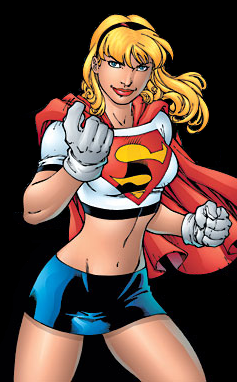
Linda Danvers, also known as Supergirl, is a fictional comic book superhero appearing in books published by DC Comics. Created by writer Peter David and artist Gary Frank, she debuted in Supergirl #1. She is not to be confused with Linda Lee Danvers, the secret identity used by the Kara Zor-El incarnation of Supergirl prior to the events of 1985's Crisis on Infinite Earths.
Supergirl is a fictional superhero appearing in American comic books published by DC Comics. The character is best known as one of the characters to have assumed the mantle of Supergirl. Created by writer Steven Seagle and artist Scott McDaniel, she first appeared in Superman: The 10¢ Adventure #1 (2003) as the alleged daughter of Superman. She is later found to be a human girl who was genetically altered by the villain Brainiac to appear Kryptonian. The character dies thwarting a plot involving Brainiac 13. Superman #200 implies that when the timeline realigned itself, Cir-El was erased from existence.
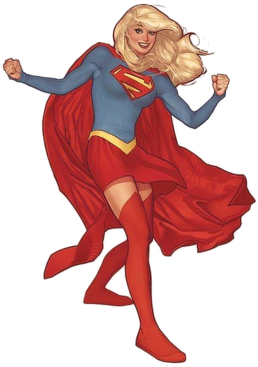
Kara Zor-El (Supergirl) also known by her adoptive names of Linda Lee Danvers, Kara Kent, Linda Lang, and Kara Danvers, is a superheroine appearing in American comic books published by DC Comics. She was created by Otto Binder and designed by Al Plastino. Danvers first appeared in the story "The Supergirl from Krypton" in Action Comics #252. Kara is the biological cousin of Kal-El, who went on to adopt the name of Clark Kent and the superhero identity Superman. Her father, Zor-El, is the brother of Superman's father, Jor-El. During the 1980s and the revolution of the Modern Age of Comics, Superman editors believed the character's history had become too convoluted, thus killing Supergirl during the 1985 Crisis on Infinite Earths event and retconning her out of existence.

Zor-El is a fictional character appearing in American comic books published by DC Comics. A Kryptonian, he is the brother of Jor-El, husband of Alura, father of Supergirl, and paternal uncle of Superman.

"The Great Darkness Saga" is a five-issue American comic book story arc featuring the Legion of Super-Heroes. It was written by Paul Levitz, with art by Keith Giffen and Larry Mahlstedt. Published by DC Comics in 1982, the arc first appears in Legion of Super-Heroes vol. 2, #290–294. It is notable for featuring appearances by virtually every living past and present Legionnaire as of 1982, as well as most of the team's 30th-century allies, including the Legion of Substitute Heroes, the Wanderers, the Heroes of Lallor, and the 20th-century Kryptonian refugee Dev-Em. The heroes battle an immensely powerful being shrouded in darkness, ultimately revealed to be the ancient ruler of Apokolips, Darkseid.

Alura In-Ze is a character appearing in media published by DC Comics, usually those involving Superman. Alura is the Kryptonian daughter of In-Zee, wife of Zor-El, mother of Supergirl, and paternal aunt of Superman. Created by writer Otto Binder and artist Al Plastino, the character first appeared in Action Comics #252.
"The Greatest Hero of Them All" is a story arc that was published by DC Comics, and presented in Superman vol. 2, #8, Action Comics #591, and Legion of Super-Heroes vol. 3, #37–38 from August through September 1987. It was written by Paul Levitz and John Byrne, and pencilled by Byrne, Greg LaRocque and Mike DeCarlo. The story arc was DC’s first attempt to correct the inconsistencies in Legion history created when the original Superboy was removed from mainstream DC continuity in the Man of Steel limited series.
"The Terra Mosaic" is a story arc that was published by DC Comics, and presented in Legion of Super-Heroes vol. 4, #25-36. It was written by Keith Giffen and Tom and Mary Bierbaum, and was pencilled primarily by Jason Pearson. The story arc takes place during the "Five Years Later" period of the Legion of Super-Heroes' original continuity. It features the introduction of "Batch SW6" — time-displaced duplicates of the regular, adult version of the Legion — who become key participants in a war to free Earth from the control of the Dominators.















